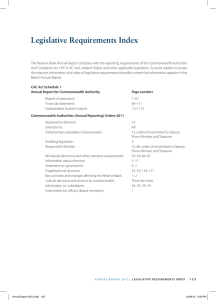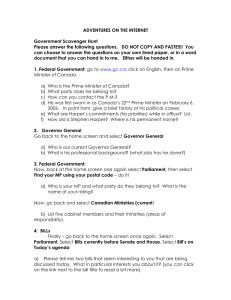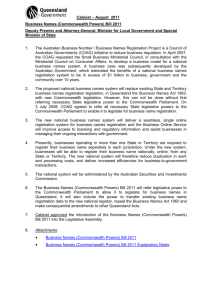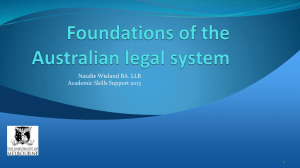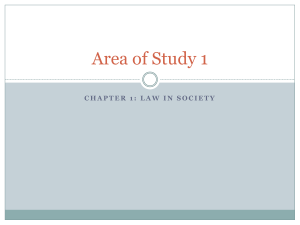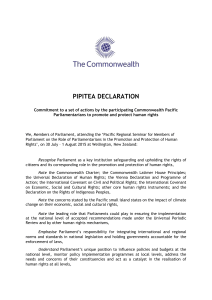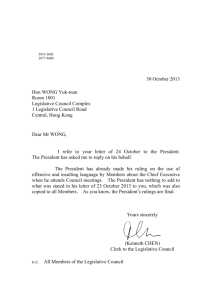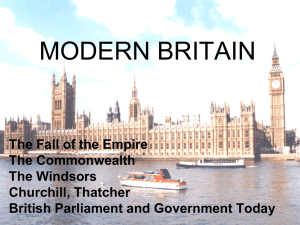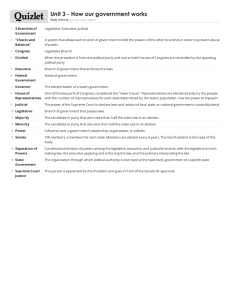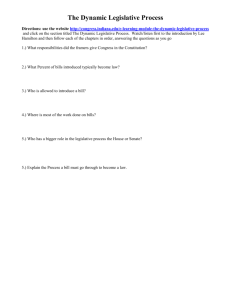structure of parliament powerpoint
advertisement
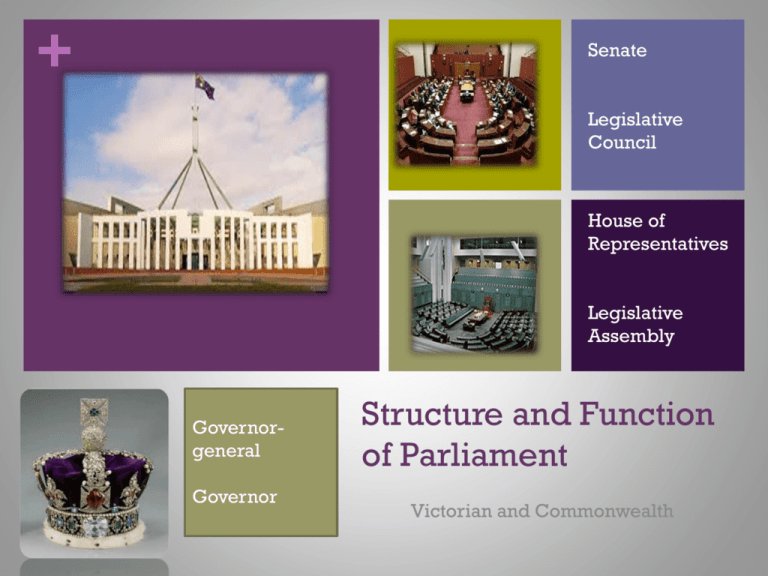
+ Senate Legislative Council House of Representatives Legislative Assembly Governorgeneral Governor Structure and Function of Parliament Victorian and Commonwealth + The Australian Parliamentary System Constitutional Monarchy Representative democracy Monarch (Queen of UK) Commonwealth Constitution (Commonwealth Constitutional Act 1900 (UK)) Political government carried out by elected representatives of the people Federation of states The Commonwealth Parliament Six state parliaments Two territory parliaments Commonwealth + Bicameral system – two houses of parliament Upper House Bicameral System Lower House Commonwealth and all state parliaments excluding QLD and the territories operate on a bicameral system + Structure of Commonwealth Parliament Upper House Commonwealth Parliament Queens Representative Governorgeneral Senate Lower House House of Representatives + Structure of House of Representatives (Lower House) 150 members of the House Elected every 3 years Each member represents a division of Australia Majority of the House forms government + Role of House of Representatives (Lower House) Initiates and makes laws Determines the government (majority forms government) Provides responsible government Represents the people (acts as a people’s house) Politicises and scrutinises government administration Controls government expenditure + Structure of Senate (Upper House) 76 Senators Elected every 6 years (half elected every 3 years) Each member represents a state or territory Each state has 12 Senators Each territory has 2 Senators + Role of the Senate (Upper House) Initiates and passes Bills (other than money Bills) Represents the states (acts as a states’ house) Acts as a house of review Scrutinises legislation (checks all Bills and delegated legislation) Operates as a check on government + Role of the Crown (Governorgeneral) Gives or withholds royal assent to Bills Appoints an executive council Federal level: made up of prime minister and senior ministers State level: premier and senior ministers Can make delegated legislation Has reserve powers Power to appoint or dismiss a premier/prime minister or minister Power to dissolve the lower house + Structure of the Victorian Parliament Upper House Victorian Parliament Queen’s Representative Governor Legislative Council Lower House Legislative Assembly + Structure of Legislative Assembly (Lower House) 88 members Elected every 4 years Each member represents a district of Victoria Majority forms government + Role of Legislative Assembly (Lower House) Initiates and makes laws Determines the government Represents the people of Victoria Provides responsible government + Structure of Legislative Council (Upper House) 40 members Elected every 4 years Each member represents a region of Victoria 8 regions in Victoria 5 members per region + Role of Legislative Council (Upper House Initiates and passes Bills (other than money Bills) Represents the regions of Victoria Acts as a house of review Scrutinises legislation Operates as a check on government + Role of the Crown (Governor) Gives or withholds royal assent to Bills Appoints an executive council Federal level: made up of prime minister and senior ministers State level: premier and senior ministers Can make delegated legislation Has reserve powers Power to appoint or dismiss a premier/prime minister or minister Power to dissolve the lower house
